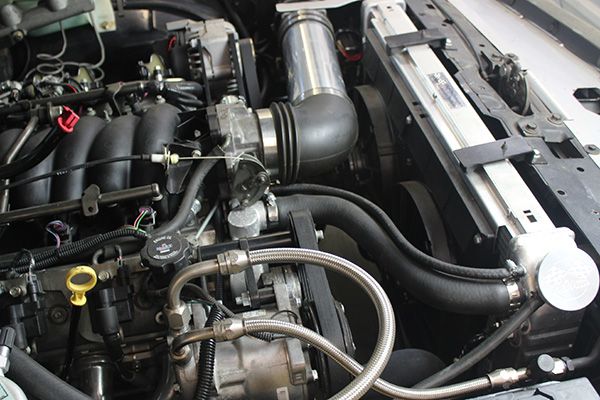The G-Body era—spanning from the late 1970s through the 1980s—produced some of the most iconic rear-wheel-drive cars ever built by General Motors. From Monte Carlos and Cutlasses to Regals and El Caminos, these classics continue to attract enthusiasts for their style, simplicity, and endless customization potential. In this guide, we’ll break down what you should look for before buying one of these timeless machines—covering price trends, rust trouble spots, model-specific tips, where to find the best deals, and how to avoid costly surprises once you get your dream G-Body home.
1. The G-Body Market in 2025
Interest in G-Bodies has surged in recent years, especially among younger enthusiasts rediscovering 1980s design. Prices vary widely depending on model, condition, and originality:
- Project cars: $1,500 – $5,000
Usually non-running or needing major rust repair. Great for LS-swap candidates. - Drivers: $6,000 – $12,000
Running cars with solid frames and minor cosmetic issues—perfect for weekend enjoyment. - Restored or modified builds: $15,000 – $35,000+
Clean paint, upgraded drivetrains, and modern touches often push values even higher.
Special trims like the Buick Grand National, Monte Carlo SS, and 442 command premium prices, but even base models are gaining collector attention as supply tightens.
2. Where to Find One
Finding the right G-Body can take patience, but the search is part of the fun.
- Online listings: eBay Motors, Facebook Marketplace, Craigslist, ClassicCars.com, and Bring a Trailer regularly feature G-Bodies.
- Local leads: Don’t overlook small car shows, swap meets, or old barns—some of the best finds never make it online.
- Tip: Always verify photos and communicate directly with the seller to avoid scams or flipped project cars with hidden issues.
3. What to Look for During Inspection
Decades of use and storage mean every G-Body hides a story. Bring a flashlight, magnet, and patience when inspecting.
Body & Rust
Rust is the G-Body’s biggest enemy. Check:
- Rear frame rails near the bumper and control-arm mounts
- Floor pans and trunk corners
- Roof seams and around T-tops (if equipped)
- Door bottoms and lower fenders
Fresh undercoating can hide damage—tap with a screwdriver or magnet to confirm solid metal.
Drivetrain
Most cars came with small-block V8s or V6s; many have been swapped. Look for:
- Oil leaks, smoke, or excessive blow-by
- Transmission shifts (especially TH200C or 200-4R units)
- Matching engine codes if originality matters
Suspension & Steering
Loose steering or clunking sounds often mean worn bushings or ball joints. These cars use a four-link rear suspension—budget for new bushings or coil springs.
Interior & Electrical
Cracked dashboards, sagging headliners, and brittle wiring are common but fixable. Verify gauges, lights, heater, and wipers all function before purchase.
4. Paperwork and VIN Verification
Documentation separates solid investments from risky projects.
- Decode the VIN to confirm the model, engine, and assembly plant.
- Check for a clean title and matching numbers.
- Inspect RPO (Regular Production Option) stickers—often found in the trunk or glovebox—for factory options.
- Use vehicle-history tools to check for salvage or theft records, especially for Grand Nationals and Monte Carlo SS models.
5. Common Buyer Mistakes
Even seasoned buyers fall for these pitfalls:
- Shiny paint over rotten metal. Always prioritize structure over cosmetics.
- Underestimating restoration costs. A $5,000 “bargain” car can quickly need $10,000 in repairs.
- Ignoring suspension and brakes. Worn bushings and lines affect safety and drivability.
- Skipping pre-purchase inspections. Paying a local mechanic for an hour of inspection can save thousands later.
- Chasing rare models without research. Verify authenticity—some “SS” or “442” badges are home-made.
6. Negotiation Tips
G-Bodies are popular, but that doesn’t mean you have to overpay.
- Do your homework: Search sold listings, not just asking prices.
- Bring cash or proof of funds: Sellers respond better to ready buyers.
- Use flaws as leverage: Rust, faded paint, or non-functioning A/C can justify discounts.
- Be polite but firm: Enthusiast sellers value respect as much as money—sometimes that earns you spare parts or extra info.
7. After You Buy
Congratulations—now the real fun begins.
- Do a safety check: Replace fluids, belts, hoses, and inspect brakes.
- Document everything: Keep a binder of receipts and photos—helps resale value.
- Plan your build: Decide early if you’ll restore, restomod, or go performance-focused.
- Join the community: GBODYTOYS, GBodyForum, and social-media groups are invaluable for advice, parts, and inspiration.
- Protect your investment: Store it indoors if possible, or use a breathable cover and rust inhibitor if outside.
8. Final Thoughts
The G-Body represents the perfect bridge between classic muscle and modern customization—affordable, stylish, and endlessly modifiable. With prices on the rise, 2025 is a great time to grab one before they become out of reach. Do your homework, inspect carefully, and you’ll end up with a timeless ride that turns heads every time you fire it up.
